Cluster is a network of eight contemporary visual arts organizations located in residential areas on the periphery of European cities (with one member organization in Israel). Each is highly invested in engaging with its particular locality. The network was formed in summer 2011 with the goal of facilitating an exchange of knowledge on how the different member organizations operate and how they relate to their local contexts, to funders, and to the media. Most of the organizations are situated in underserved or impoverished areas with large immigrant populations, and where many languages are spoken. It is the first network of its kind.
The member organizations of Cluster are focused on commissioning and producing contemporary art. Their programs are often experimental, process-driven, and research-based, and the organizations work with both local and international artists. Although the organizations vary in size, they all produce work that is deeply invested in their local contexts. Cluster believes there is a strong need to build a dialogue around this work, not least because the activities of art institutions in peripheral cities are hardly covered in art publications, but also because these spaces play a small but very important role in the constitution of the public sphere—they are physical spaces for unusual forms of assembly, experience, and exchange. The Cluster network is dedicated to exploring such possibilities, especially in the light of nationalist tendencies across Europe.
A symposium on the artistic, social, and political implications of this work will take place June 13–15, 2014. Subsequently, a book discussing the Cluster network and its concerns will be published by Sternberg Press. The member institutions of Cluster are: Casco – Office for Art, Design, and Theory (Utrecht); Centre d’art contemporain de Brétigny (Brétigny); Les Laboratoires D’Aubervilliers (Paris); The Showroom (London); Tensta Konsthall (Stockholm); CA2M Centro de Arte Dos de Mayo (Mostoles); Israeli Center for Digital Art (Holon); and the P.A.R.A.S.I.T.E. Museum of Contemporary Art (Ljubljana). This discussion took place at the P.A.R.A.S.I.T.E. Museum in Ljubljana on September 28, 2013.
—Cluster
Maria Lind: I have recently been thinking about the main character in Italo Calvino’s book Baron of the Trees—the aristocratic boy in eighteenth-century Italy who decides to live in trees. This is such a powerful image of living differently. It doesn’t involve inventing a spaceship or some fantastic new device. It just involves shifting the terms we have right outside the window. The Cluster network is now two years old, and my questions are: What has Cluster actually done? Why did Cluster emerge at this point in time? Why not ten or even five years ago?
Binna Choi: It partly came out of the financial crisis—that may have necessitated our way of working. Maybe there is also skepticism about what culture can produce or generate. By forming this network, you’re creating some kind of circuit that galvanizes a new force.
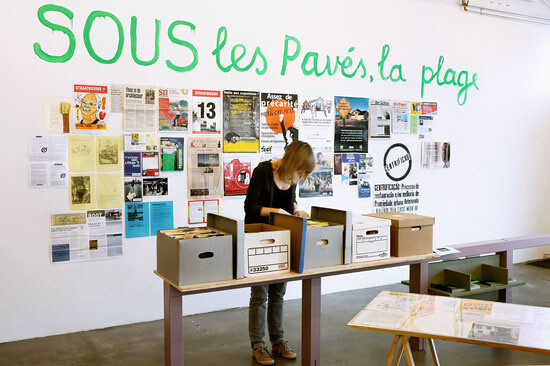

Pierre Bal-Blanc: It’s very difficult to produce ideas or even to produce content through a network. With Cluster, we try to experiment with our shared practices, sites, and knowledge, and then we take time to understand the differences and similarities among our respective situations. We are isolated. We sometimes feel like we’re working in hostile environments. We are confronted with indifferent audiences, with people we have to continually convince to participate in our activities. The different parts of our practice as small-scale institutions are not natural, but rather the result of clear decisions—not something that has its own tradition and customs, but something that involves a commitment to working to transform our environments.
Maria: In many cases, we are the places where people have their first encounter with contemporary art. In the case of Tensta, that’s particularly true when it comes to young people. It’s a huge responsibility.
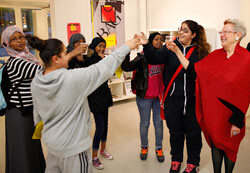

Tadej Pogačar: Here at P.A.R.A.S.I.T.E., from the very beginning we organized a lot of exhibitions, like first solo shows. For the majority of young girls and boys, this is their first encounter with an art space. They are totally lost. They have no idea what to expect. They are trembling. How this initiation happens is extremely important, so we really try to work hard on it.
Sanne Oorthuizen: Courage is important, having the courage to tremble.
Pierre: They need that. Sometimes, children in the exhibition space are completely fascinated by the space itself, even if there is nothing inside. Our role is to make clear for them that space is a language. As Henry Lefevbre would say: “La pratique spatiale règle la vie; elle ne la fait pas.”
Pablo Martinez: If the institution is located in a working class context, you are not supposed to do things that are intellectually or aesthetically challenging—you’re supposed to do things that are easy for the audience, because for working class people, this is their first contact with art. But I think being in this context makes it necessary to do quality things with the best artists. This is the inverse logic followed by art professionals who have in mind an audience that is more intellectual or sensitive to an established set of references.
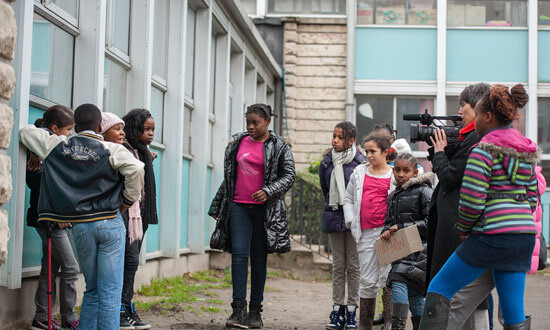

Nataša Petrešin-Bachelez: None of us could do the same work if we were somewhere else. We understand these institutions not as neutral places, but as always situated and reflected, as interacting with their surroundings. It’s not just that the institutions interact with their surrounding class environments; surrounding conditions also impact what happens within the institutions.
Maria: It’s a radical specificity. Everything we do is tailor-made. If everything is tailor-made, it’s much more expensive in terms of resources, time, labor, energy, and so on. That’s a common denominator. We put a lot of care into shaping something in relation to local conditions. I have a question about proximity. When you’re close to something, “embeddedness” is a useful term—we are perhaps organizations consciously embedded in our contexts, in our neighborhoods. What happened to the embedded journalists in Iraq? They went with the troops; they were really there when things happened, and they took lots of blurry photographs with their mobile phones. The things they wanted to transmit were difficult to see, although they were the ones closest to the real thing, true eyewitnesses. The situation we’re facing is similar, in that it’s hard for us to transmit what we’re doing, because of this proximity. Hito Steyerl has written beautifully about this—the closer you get, the more abstract the visual output. I think we’re in that situation somehow. The pixels are getting more and more blurred. So we have to tell the story in a different way. We are all, in various ways, vital parts of small and large art biotopes, but we don’t necessarily get covered by national media or international art magazines. In that sense, we are a blind spot.
Eyal Danon: It’s not only related to how we tell the story to the outside. We also need this perspective for ourselves. We need to see that the places we work in are unique, and that there are similarities among them. We need this even before we reach the level of communicating with the outside.
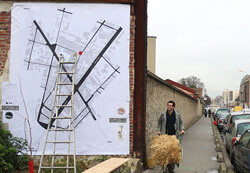

Pierre: Every art institution is embedded in its local situation, even the big museums in the center of the city. In my view, the problem is understanding of our situation in relation to the globalization of the art world. The emergence of biennials and contemporary art organizations everywhere on the planet in the ’90s shifted the center away from the West. It is important to see us also as a product of this situation. Nowadays, we are supposed to obey the forces imposed by neoliberalism (decentralization, dispersion, disproportion) without any of the advantages of the previous situation—that is, liberalism (centrality, monopoly, scale). That’s what we have to change with Cluster, using our knowledge of the margin.
Maria: It is also about atomization: things got very dispersed at one point, with plenty of relative peripheries or relative centers, depending on how you saw it. But this very much involved the structural changes of neoliberalism. The effect started to become more palpable in certain places around 2005, and it has escalated in terms of the conditions of production for organizations like ours. Now it is time to connect the dots, maybe even to mobilize.
Eyal: Speaking from our perspective, we always felt that we were working in isolation—globally, but also in our region. So we needed different kinds of networks, like the one we tried to establish with our project Liminal Spaces. It was all about trying to overcome this kind of isolation.
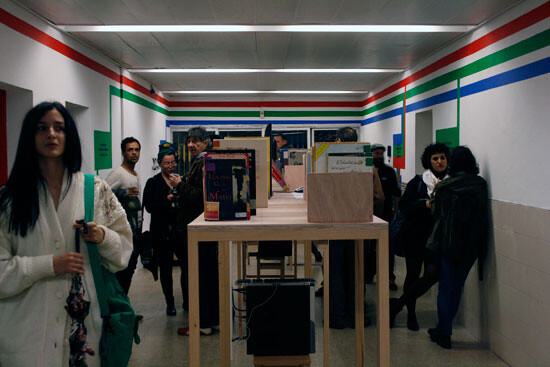

Pierre: As organizations, are we an alternative, or are we producing the same things as the market? The legitimization of value is dominated by the market, and we are also under this dominion of value.
Maria: What do you think?
Pierre: It’s a bit like Félix Guattari’s “existential territory”—the alternative is the temporary coalition.1 Our network is just a temporary coalition. It cannot become an institutionalized network because it will lose the energy that is currently has. The question is how to constantly mutate in our activity, because the mission of the market is to institute value, to focus and condense everything into the same value. How do we produce a situation in which we can provide another kind of legitimization, other kinds of values? Neoliberals try to convince everyone that there is just one market, but that’s a lie: there are different markets. The drug market, the weapons market, even the art market is not completely inside the neoliberal market. At the same time, we all strive to take our activity into the market. We are all concerned with seeing the artists we work with recognized in the market. Markets are not the problem per se. The problem is the monopolization on legitimization.
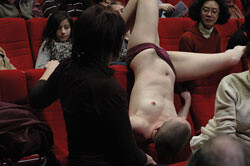

Maria: I am not sure if we are concerned with making the artists we work with become recognized by the market. Sometimes that happens anyway. If it is true that we work according to a tailored logic, that we tailor-make everything, this also means that we’re infinitely flexible. Which means that we exhibit one of the main characteristics of neoliberalism.
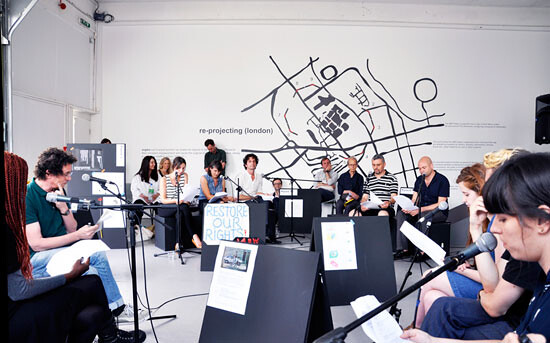

Emily Pethick: The way we work with flexibility is quite often on a timescale—we give a lot of time to things, slow things down, and that runs counter to the market economy, which is based on efficiency and shrinking down processes. We give a lot of time to artists and stretch the timescale if it feels like something will go further. It’s a kind of slowing down. The models of the biennials or larger institutions have a lot more problems with enabling these kinds of processes. We’re actually stretching things out and enabling something to grow on its own.
Binna: If we look at ourselves from an economic or productive perspective, we’re like organic produce, an organic shop. The things that we produce or sell are often cultivated locally, not mass-produced. Although they might be expensive, they’re tasty for those who pay attention.
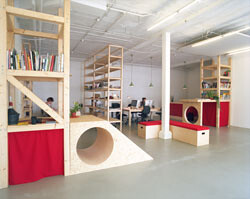

Emily: The risk of that analogy—the tailor-made or the organic vegetable—is that it’s not something that everybody can afford. That’s where public funding comes in—we’re subsidized so that everyone can afford us. The benefit of flexibility is that you can change the rules. At the Tate, they have a whole visitor services team that controls how people move through the institution. The baby crawling across the floor doesn’t fit into the system at Tate. We had a program devised by artist Andrea Francke called Invisible Spaces of Parenthood. Some of the people involved said they used to feel uncomfortable taking their children to galleries and museums, so we put a little notice on our website saying, “Children are welcome at all our events.” We got an amazing response. There are unspoken rules or invisible structures within every institution. There’s a discomfort in how you inhabit the space.
Ferran Barrenblit: For me, the question is, how can we be relevant without pretending to be leaders? In London, during our public conversation with Chris Dercon and Ralph Rugoff at The Showroom in May 2013, Dercon asked what our biggest achievement was. I said: surviving. Ralph Rugoff replied that maybe we should have disappeared, because in the art world, the idea is that you can only be relevant if you are the leader of something. How do we introduce another system of relevance?
Binna: Many of us are talking about the commons and the practice of commoning. How we can multiply and broaden the commons? How do we see the future of our organizations, especially in terms of scale—perhaps in twenty years’ time? Stavros Stavrides has talked about the problem of the avant-garde as an “alternative enclave” that is doomed to fail in achieving utopia, because in order to achieve this, you need to multiply the passages linking individuals, groups, and different open places.2 Can leadership, or better “initiatives,” center around creating passages that amount to more than just the sum of many small minorities? This might help us grow in a way that is not mere expansion. We shouldn’t see small spaces like ours as just a rung on the hierarchical ladder, and we shouldn’t pursue expansion just for the sake of survival.
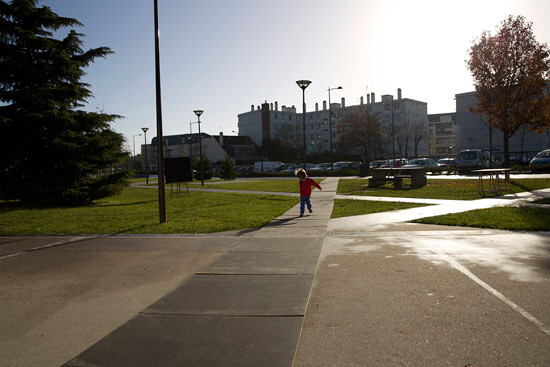

Pierre: Recently, I finally came to understand that I could not convince the Ministry of Culture in France that small-scale institutions are sometimes much more relevant than big ones. The Ministry regards small institutions as merely local or regional entities—they don’t understand that a small institution can have a very relevant existence in the global situation. We have proven with our network that in fact small institutions are relevant, if you take a larger view.
Maria: One of the problems is that too often, funders think about small-scale organizations the same way they think about large-scale organizations. Standards based on what the Tate Modern, the Centre Pompidou, or the Moderna Museet do trickle down and are supposed to serve as the principles for assessing what we do. However, we have less in common with these national organizations than we do with, for example, a small publisher or record label. Moreover, in economic terms, we are efficient. If you think of us as part of the research and development branch of society, and if you consider that the things we develop will eventually be put to use for economic profit, then the public money we receive is probably quite a good investment.
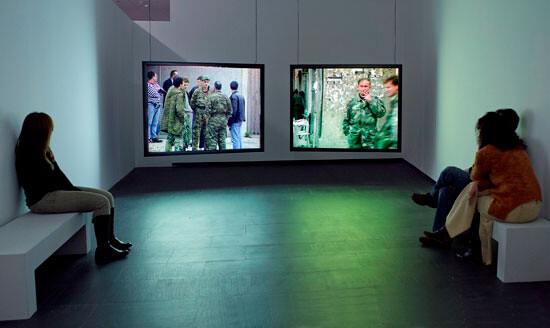

Ferran: Maybe we have to find a different word than “efficiency,” because that’s a neoliberal concern. It’s true that we want to make the most of our money and our budgets, but I don’t think we can be measured in terms of efficiency. I insist in thinking about ourselves and our work in terms of the butterfly effect. I know that the next revolution will start in a Cluster member organization! Maybe it will be Casco. If we insist on thinking of efficiency in neoliberal terms, we will always lose the battle, because it will always come back to haunt us.
Emily: But I think we are a very efficient. We do a lot with very little. We are a good value for what we deliver.


Ferran: Yes, but then somebody else will come and do more with less. We should introduce a different element for evaluating our work, one that is linked to something other than budgetary efficiency. When I try to explain our museum to our officials—we’re mostly dependent on a single source of income—I say that starting a museum was a good idea, that we’re building something sustainable for them. I try to demonstrate that we have 0.01 percent of the general budget of the Madrid region. This way of thinking works for them. But it doesn’t for us, and maybe it doesn’t work for our artists either.
Emily: I think the Silent University was a good example of the limitations of a large institution like the Tate. They set up a really amazing one-year project with Ahmet Ögüt—they developed a group of asylum seekers who weren’t allowed to work, and who voluntarily kept coming to the project, taking part, and giving a lot of time and knowledge. At the end of the project, they had an amazing body of relationships, which is a treasure for any organization—a group of people who are engaged and committed to something. But the Tate couldn’t sustain it, and so the artist asked us at The Showroom if there was anything we could do to continue the network, because it would’ve been a shame to lose it. It’s a project that should go on for another two years. Something really incredible could come out of it.
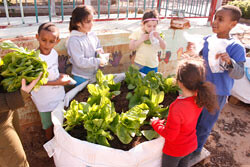

Maria: It’s a different sense of accumulation. I’d also like to talk about quality. Each of us has a rather precise way of articulating what we do. We have a precise way of selecting the artists or the artworks we engage with, and of selecting the combinations, the methods, and the timing that figures into our work. This specificity generates a sense of quality because it is based on many distinctions; you have to cut away a lot, you have to negate a lot, you have to put aside a lot. For me this is urgent, because we are flooded with art that is rubbish! I want to talk about this idea of having more exact formulations of why we’re actually engaging with what we’re engaging with, and how we do it. We insist on quality. This is certainly not a monolithic notion, but rather something that has to be reformulated and negotiated in each situation.
Pierre: I understand what you’re saying, but I think we are concerned with building something as a general idea over time, which is not like producing one project after the other. I think the common way to work is to be attentive to the often overlooked parts—what is in between two projects, how you pass from one project to another, how you negotiate two projects at the same time, how you proceed in a general way. When I worked as an independent curator at other institutions, I was sometimes surprised at how people just produced one event after another without any connection. They just looked straight ahead. Here, we have something that is the complete contradiction of that.
Maria: One way of putting forth a notion of quality is by paying attention to many things that, in the process of curating and running an institution, are often ignored. This is what I would call “working curatorially.” This is the major difference between institutions whose purpose is to construct a canon, and those that are more interested in investigating a cultural condition in a way that requires some attention to methodology and context, whether synchronic or diachronic.
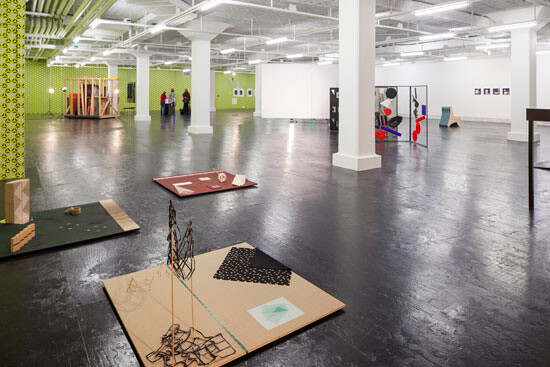

Ferran: When you talk about quality, I understand you as talking about what we work with in combination with how: maybe the quality should come more from how we develop the projects we present.
Maria: I would insist on what as well, as there is so much that is really substandard. It’s constantly used in arguments by politicians in Sweden: they say, “Isn’t it great that you have more art.” No, it’s not. I only want more great art, not more art in general. We are drowning in bad work and even worse curating.
Binna: In the Netherlands, there was a behind-the-scenes argument going on in relation to budget cuts. Some argued that we in fact needed the cuts—there are many “bad” organizations and many “bad” artists, so we need to cut them out. To a certain degree, one could agree with this. Some sort of transformation, reinvention, and reorganization process was necessary, since the public subsidy system’s dominance brings stagnation. Yet, nobody could say this officially, because it involved the big question of “how”: How do you decide what has quality and what doesn’t? This problem exists on every level. Why are so many artworks produced each year? Why are so many art festivals and temporary projects instrumentalized for marketing purposes? What does art serve, if it serves anything?
Maria: But precisely because there is so much care going into this in the Cluster organizations, that generates a very specific idea of what I think is quality. I might not like the same things as you, but that’s not the point. I’m not ready to let go of the notion of quality yet. I’m not prepared to raise the white flag—let’s find a way to reclaim quality!
Binna: I tend to agree, but there cannot be an absolute quality. Quality is a term that has to be debated, while differences and a certain degree of diversity must be embraced.
Emily: I also think that there are organizations that have passed their sell-by date. They hang on because they’re part of the landscape. By contrast, there’s energy in an organization that is sustained by those who run it. If an organization runs out of energy, I don’t think it should continue, because there are always other forms—always new things that need room to arise. In the end, it’s about the people who are sustaining these things and making them alive, relevant, and challenging.
Maria: With Tensta, I’m still obsessed with the idea of creating stability, of being agile, of being able to offer continuity in a context where so many things are in flux. This continuity is necessary in order to present art in a consistently high-quality manner—to be able to maintain a certain standard of working. Apart from that, location and staff structure can change. In twenty years time, I would like to be able to say that there is a contemporary art space in Tensta that has a long history of high-quality work. That’s what I would like to see. But that would require us to develop real skills to survive very rocky conditions.
Binna: I think I’m a bit different, maybe because I started in another field, in philosophy. The goal is not art. Art might be dissolved and transformed into something else, assuming that what we pursue is value—not a field or a discipline.
Maria: If art is a form of understanding, the shape might change, but the function would remain.
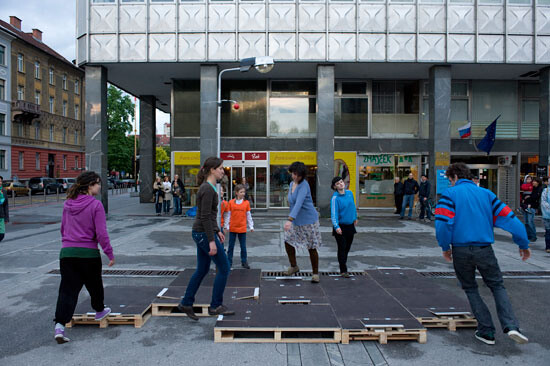

Emily: That’s what I mean: certain forms become redundant and others take over.
Binna: The special kind of work we do is often enabled by personal relationships. A while ago, I noticed a woman who sometimes came to our events. She looked totally different from any other professional audience member. Sometimes she was weaving while listening. During winter, I sometimes noticed that she didn’t wear stockings. We wondered, who is this woman? One day I talked to her, and she said she ran an organization called Stichting LOS.3 She was extremely articulate and knowledgeable about immigration policy in the Netherlands. At the time, we were preparing an archival presentation of Martha Rosler’s project If You Lived Here. In this context, we felt we could support the woman’s work. We hosted meetings for her organization. We provided design in collaboration with a local design school. We helped publish a book of the organization’s research, and we hosted the launch of the book. But then, after, we worked with her again and again—we had been working with her for three projects. For example when working with Lawrence Abu Hamdan, contact with her was extremely important: she brought Somalian migrants who were living in asylum, but they are in fact activists who shared their knowledge on Somali history and language that in turn enabled Lawrence to create an aesthetically and intellectually exceptional map that counters the relevance of language analysis to identity the origin of a refuge. It’s really about caring, giving unprejudiced attention to small things, and trusting in the possibility of resilience and long-term cultivation.
Maria: The Women’s Center in Tensta recently needed a few extra tables, so they borrowed three tables from us. Then we wanted catering for a board meeting, so we ordered food from them, and eventually they get involved in Petra Bauer’s current art project. This led them to ask if we could help them recruit some supporting members to generate more funds.
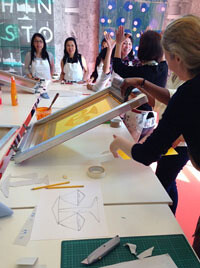

Emily: I think that’s how a community operates. You become friends and you sustain a relationship on many levels.
Alexandra Baudelot: I think we’ve all had this experience—turning the public into a community.
Pierre: But we also feel we have to produce an audience for each project. You never accumulate an audience—in ten years, I have never accumulated an audience. This particular concept of audience is not relevant anymore. I tried to show this in the exhibition “The Death of the Audience,” using scores by Cornelius Cardew and Anna Halprin, and displays by Rasheed Araeen and Nicola L. The role of the protagonist in the art field moves, and we have to recreate a temporary collectivity for each project. A cluster community, we could say, in which anyone can adopt any position—a reversibility of positions, which offers an escape from the fixed value imposed by commodification standards.
Maria: But you accumulate relationships.
Pierre: Yes, but you also lose those relationships—they are very temporary situations. For most people, it doesn’t make sense to be constantly in an art center!
Alexandra: For sure. The only way to involve the different communities we work with is to have them be part of artistic projects. We did a huge project with a specific community where I live, but when the project was finished, we never saw them again.
Maria: What happens if we think of it not as groups or individuals coming together in a community, but instead as producing space together, like Simon Sheikh has suggested. We are producing something that happens between us—a field of radiance or force. It loses intensity once the project is over, but it isn’t completely gone. It can shift and be reenergized and grow in another direction.
See Félix Guattari, “The Three Ecologies,” trans. Chris Turner, New Formations no. 8 (Summer 1989): 131–147.
An Architektur, “On the Commons: A Public Interview with Massimo De Angelis and Stavros Stavrides,” e-flux journal no. 17 (June 2010) →.
Landelijk Ongedocumenteerden Steunpunt, a foundation that supports the undocumented. See →.
